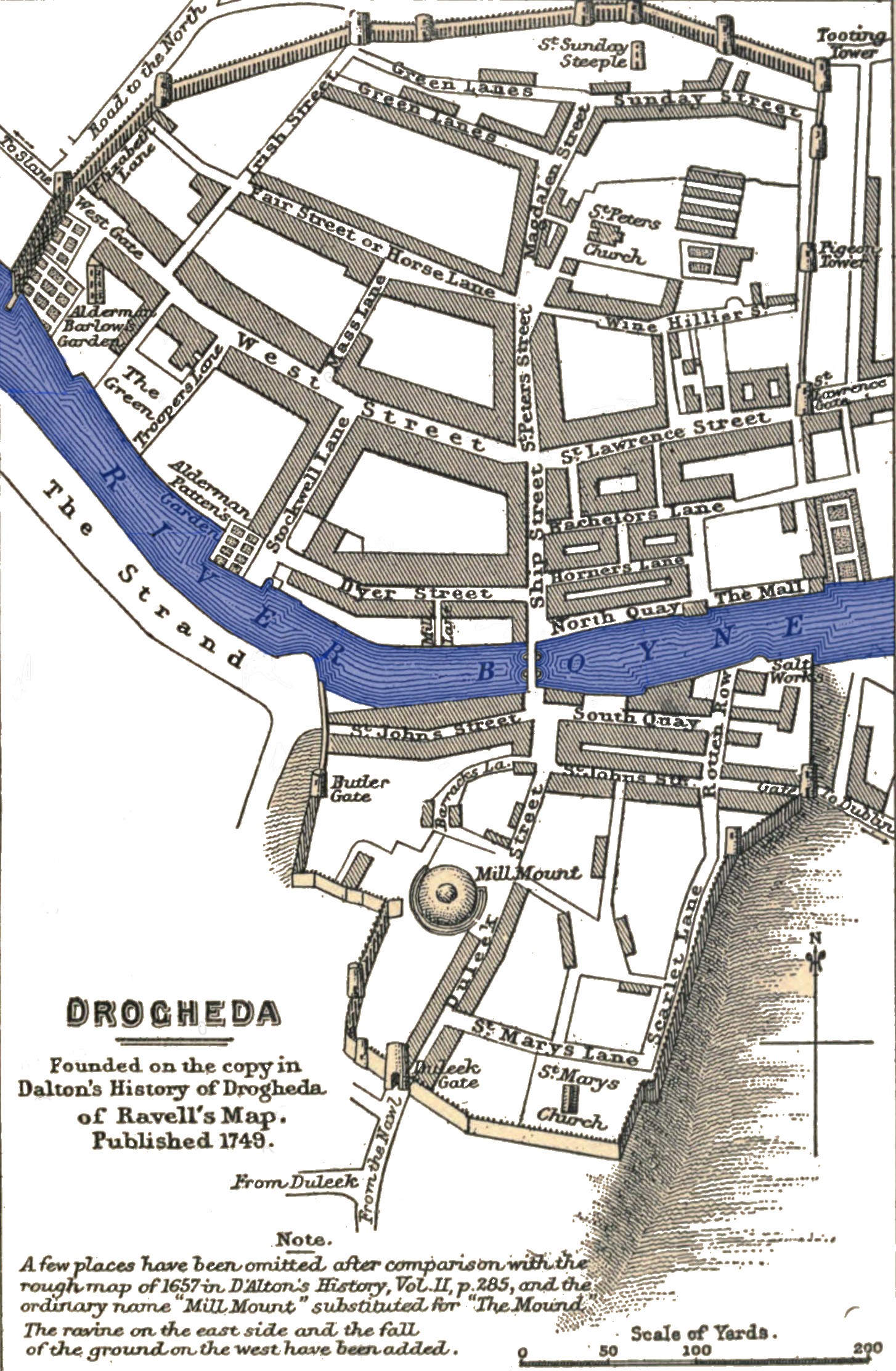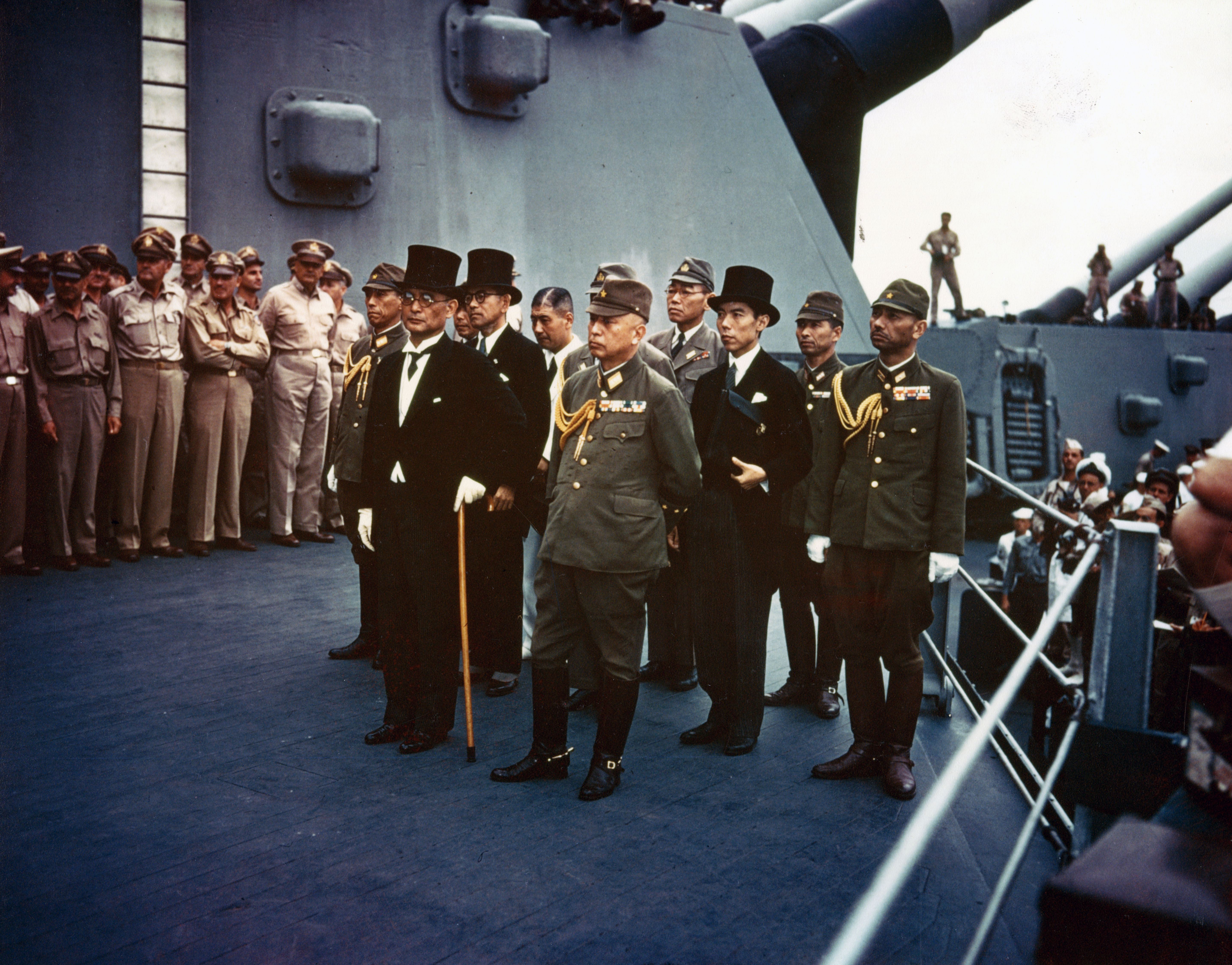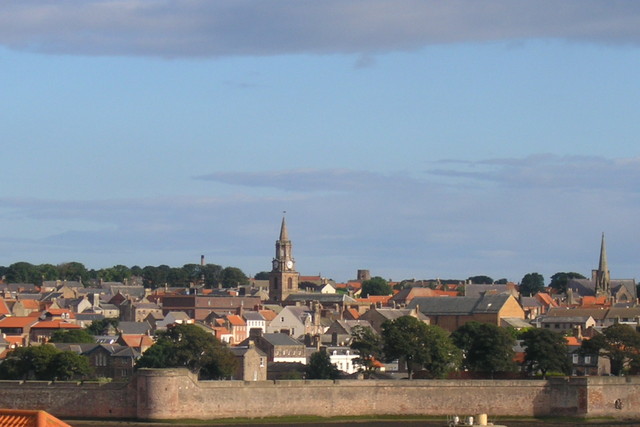|
Massacre Of Drogheda
The siege of Drogheda took place from 3 to 11 September 1649, at the outset of the Cromwellian conquest of Ireland. The coastal town of Drogheda was held by a mixed garrison of Irish Catholics and Royalists under the command of Sir Arthur Aston, when it was besieged by English Commonwealth forces under Oliver Cromwell. After Aston rejected an invitation to surrender, the town was stormed and much of the garrison executed, along with an unknown but "significant number" of civilians. The aftermath of the siege is viewed as an atrocity which still impacts Cromwell's modern reputation. Background Since 1642, most of Ireland had been under the control of the Irish Catholic Confederation, who had taken much of the country in the aftermath of the 1641 Irish rebellion. Following the Execution of Charles I in January 1649, the Confederates allied with English exiles and Protestant Irish Royalists to secure Ireland for his son, Charles II of England Charles II (29 May 1630 – ... [...More Info...] [...Related Items...] OR: [Wikipedia] [Google] [Baidu] |
Felim O'Neill Of Kinard
Sir Phelim Roe O'Neill of Kinard ( Irish: ''Sir Féilim Rua Ó Néill na Ceann Ard''; 1604–1653) was an Irish politician and soldier who started the Irish rebellion in Ulster on 23 October 1641. He joined the Irish Catholic Confederation in 1642 and fought in the Wars of the Three Kingdoms under his cousin, Owen Roe O'Neill, in the Confederate Ulster Army. After the Cromwellian conquest of Ireland O’Neill went into hiding but was captured, tried and executed in 1653. Birth and origins Phelim was born in 1604, the eldest son of Turlough O'Neill and his wife Catherine O'Neill. His father was a member of the Kinard branch of the O'Neills who were descendants of Shane O'Neill of Kinard, a half-brother of Conn Baccach O'Neill. His father and paternal grandfather were killed on 20 June 1608, while defending Kinard against the insurgents during the O'Doherty's Rebellion. This grandfather, Sir Henry Óg O'Neill, had fought for his seco ... [...More Info...] [...Related Items...] OR: [Wikipedia] [Google] [Baidu] |
James Butler, 1st Duke Of Ormonde
Lieutenant general, Lieutenant-General James FitzThomas Butler, 1st Duke of Ormond, Knight of the Garter, KG, Privy Council of England, PC (19 October 1610 – 21 July 1688), was an Anglo-Irish statesman and soldier, known as Earl of Ormond from 1634 to 1642 and Marquess of Ormond from 1642 to 1661. Following the failure of the senior line of the Butler dynasty, Butler family, he was the second representative of the Butler dynasty#Butlers of Kilcash and Thurles, Kilcash branch to inherit the earldom. His friend, the Thomas Wentworth, 1st Earl of Strafford, Earl of Strafford, secured his appointment as commander of the government army in Kingdom of Ireland, Ireland. Following the outbreak of the Irish Rebellion of 1641, he led government forces against the Confederate Ireland, Irish Catholic Confederation; when the First English Civil War began in August 1642, he supported the Cavalier, Royalists and in 1643 negotiated a ceasefire with the Confederation which allowed his troops ... [...More Info...] [...Related Items...] OR: [Wikipedia] [Google] [Baidu] |
Surrender At Discretion
An unconditional surrender is a surrender (military), surrender in which no guarantees, reassurances, or promises (i.e., conditions) are given to the surrendering party. It is often demanded with the threat of complete destruction, extermination or annihilation. Announcing that only unconditional surrender is acceptable puts psychological warfare, psychological pressure on a weaker adversary, but it may also prolong belligerent, hostilities. A party typically only demands unconditional surrender when it has a significant advantage over their adversaries, when victory is thought to be inevitable. In modern times, unconditional surrenders most often include guarantees provided by international law. In some cases, surrender is truly accepted unconditionally; while in other cases terms are offered and accepted, but forces are declared to be subject to "unconditional surrender" for symbolic purposes. This type of surrender may also be accepted by the surrendering party under the expect ... [...More Info...] [...Related Items...] OR: [Wikipedia] [Google] [Baidu] |
Cannon Fire At Millmount, Drogheda - Geograph
A cannon is a large-caliber gun classified as a type of artillery, which usually launches a projectile using explosive chemical propellant. Gunpowder ("black powder") was the primary propellant before the invention of smokeless powder Finnish smokeless powder Smokeless powder is a type of propellant used in firearms and artillery that produces less smoke and less fouling when fired compared to black powder. Because of their similar use, both the original black powder formula ... during the late 19th century. Cannons vary in gauge (firearms), gauge, effective range, mobility (military), mobility, rate of fire, elevation (ballistics), angle of fire and firepower; different forms of cannon combine and balance these attributes in varying degrees, depending on their intended use on the battlefield. A cannon is a type of heavy artillery weapon. The word ''cannon'' is derived from several languages, in which the original definition can usually be translated as ''tube'', ''cane'', o ... [...More Info...] [...Related Items...] OR: [Wikipedia] [Google] [Baidu] |
Sortie
A sortie (from the French word meaning ''exit'' or from Latin root ''surgere'' meaning to "rise up") is a deployment or dispatch of one military unit, be it an aircraft, ship, or troops, from a strongpoint. The term originated in siege warfare. In siege warfare In siege warfare, the word ''sortie'' refers specifically to a sudden sending of troops against the enemy from a defensive position—that is, an attack launched against the besiegers by the defenders. If the sortie is through a sally port, the verb ''to sally'' may be used interchangeably with ''to sortie''. Purposes of sorties include harassment of enemy troops, destruction of siege weaponry and engineering works, joining the relief force, etc. Sir John Thomas Jones, analyzing a number of sieges carried out during the Peninsular War (1807–1814), wrote: In aviation In military aviation Military aviation is the design, development and use of military aircraft and other flying machines for the purposes of ... [...More Info...] [...Related Items...] OR: [Wikipedia] [Google] [Baidu] |
Invest (military)
Investment is the military process of surrounding an enemy fort (or town) with armed forces to prevent entry or escape. It serves both to cut communications with the outside world and to prevent supplies and reinforcements from being introduced. A contravallation is a line of fortifications built by the attackers around the besieged fortification facing towards an enemy fort to protect the besiegers from sorties by its defenders and to enhance the blockade. The contravallation can be used as a base to launch assaults against the besieged city or to construct further earthworks nearer to the city. A circumvallation may be constructed if the besieging army is threatened by a field army allied to an enemy fort. It is a second line of fortifications outside the contravallation that faces away from an enemy fort. The circumvallation protects the besiegers from attacks by allies of the city's defenders and enhances the blockade of an enemy fort by making it more difficult to smuggl ... [...More Info...] [...Related Items...] OR: [Wikipedia] [Google] [Baidu] |
English House Of Commons
The House of Commons of England was the lower house of the Parliament of England (which incorporated Wales) from its development in the 14th century to the union of England and Scotland in 1707, when it was replaced by the House of Commons of Great Britain after the 1707 Act of Union was passed in both the English and Scottish parliaments at the time. In 1801, with the union of Great Britain and Ireland, that house was in turn replaced by the House of Commons of the United Kingdom. Origins The Parliament of England developed from the Magnum Concilium that advised the English monarch in medieval times. This royal council, meeting for short periods, included ecclesiastics, noblemen, and representatives of the counties (known as "knights of the shire"). The chief duty of the council was to approve taxes proposed by the Crown. In many cases, however, the council demanded the redress of the people's grievances before proceeding to vote on taxation. Thus, it developed legislative ... [...More Info...] [...Related Items...] OR: [Wikipedia] [Google] [Baidu] |
Speaker Of The House Of Commons (United Kingdom)
The Speaker of the House of Commons is the presiding officer of the House of Commons of the United Kingdom, House of Commons, the lower house and primary chamber of the Parliament of the United Kingdom. The current speaker, Lindsay Hoyle, was elected Speaker on 4 November 2019, following the retirement of John Bercow. Hoyle began his first full parliamentary term in the role on 17 December 2019, having been unanimously re-elected after the 2019 United Kingdom general election, 2019 general election. The speaker Speaker (politics), presides over the House's debates, determining which members may speak and which Amend (motion), amendments are selected for consideration. The speaker is also responsible for maintaining order during debate, and may punish members who break the rules of the House. By convention, the Speaker is strictly non-partisan; accordingly, a Speaker is expected to renounce all affiliation with their former political parties when taking office and afterwards. T ... [...More Info...] [...Related Items...] OR: [Wikipedia] [Google] [Baidu] |
William Lenthall
William Lenthall (1591–1662) was an English politician of the English Civil War, Civil War period. He served as Speaker of the House of Commons (United Kingdom), Speaker of the House of Commons for a period of almost twenty years, both before and after the execution of Charles I of England, King Charles I. He is best remembered for his defiance of the king on 4 January 1642 when Charles entered the chamber of the House of Commons, supported by 400 armed men, in an attempt to seize Five Members, five members whom he accused of treason. When Charles asked Lenthall where the five were, Lenthall famously replied "I have neither eyes to see nor tongue to speak in this place but as this House is pleased to direct me". It was the first time in English history that a speaker of the House of Commons had declared his allegiance to the liberty of parliament rather than the will of the monarch. Early life Lenthall was born in Henley-on-Thames, Oxfordshire, the second son of William Lenth ... [...More Info...] [...Related Items...] OR: [Wikipedia] [Google] [Baidu] |
Millmount Fort
Millmount is a large fortified complex situated on a great mound on the South bank of the River Boyne located in Drogheda, County Louth, Ireland. The fort has played a crucial part in Drogheda's history and has been a dominant feature from Norman settlement, to Cromwell's invasion to the more recent Civil War in 1922, in which the famous Martello tower was shelled and all but destroyed. Today the complex houses the Millmount Museum which houses a wide variety of artifacts of local and national importance. The complex is Drogheda's most dominant feature, clearly visible from all parts of the town. The Martello tower is affectionately known as "The Cup and Saucer" by locals. The whole fort is a national monument and has been designated as Drogheda's Cultural Quarter. History It has been fortified in historical times since the early 12th Century CE when the invading Normans built a motte and bailey on what was probably originally a Neolithic passage grave similar to Newgrange. ... [...More Info...] [...Related Items...] OR: [Wikipedia] [Google] [Baidu] |
Curtain Wall (fortification)
A curtain wall is a defensive wall between fortified towers or bastions of a castle, fortress, or town. Ancient fortifications Evidence for curtain walls or a series of walls surrounding a town or fortress can be found in the historical sources from Assyria and Egypt. Some notable examples are ancient Tel Lachish in Israel and Buhen in Egypt. Curtain walls were built across Europe during the Roman Empire; the early 5th century Theodosian Walls of Constantinople influenced the builders of medieval castles many centuries later. Curtain wall castles In medieval castles, the area surrounded by a curtain wall, with or without towers, is known as the bailey. The outermost walls with their integrated bastions and wall towers together make up the enceinte or main defensive line enclosing the site. In medieval designs of castle and town, the curtain walls were often built to a considerable height and were fronted by a ditch or moat to make assault difficult. Walls were topped ... [...More Info...] [...Related Items...] OR: [Wikipedia] [Google] [Baidu] |
Troop
A troop is a military sub-subunit, originally a small formation of cavalry, subordinate to a squadron. In many armies a troop is the equivalent element to the infantry section or platoon. Exceptions are the US Cavalry and the King's Troop Royal Horse Artillery where a troop is a subunit comparable to an infantry company or artillery battery. Historically the remainder of the Royal Horse Artillery used the term ''troop'' in the same manner but they eventually aligned with the rest of the Royal Regiment of Artillery in referring to troops as subordinate to artillery batteries. ''Troops'' is often used to refer to the other members of one's company or cause, but because of its military connotations, it conveys a particularly altruistic type of dedicated worker. Traditionally, ''troops'' refers to the soldiers in a military. A cavalry soldier of private rank is called a " trooper" in many Commonwealth armies (abbreviated "Tpr", not to be confused with "trouper"). A re ... [...More Info...] [...Related Items...] OR: [Wikipedia] [Google] [Baidu] |








